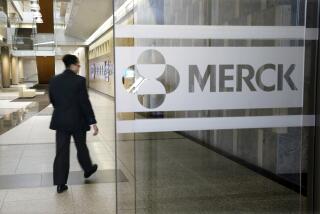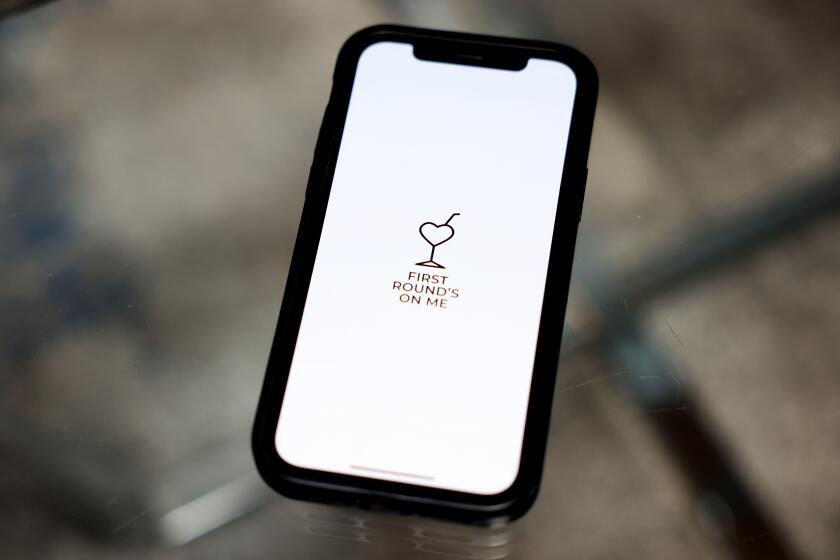Merck Reports Its Smallest Quarterly Gain in 8 Years
Merck & Co. said Friday its second-quarter profit rose 5.4%, the smallest quarterly gain in eight years, as the drug maker struggled to meet sales targets for the Vioxx painkiller.
Net income rose to $1.82 billion, or 78 cents a share, from $1.72 billion, or 73 cents, on a 25% increase in revenue to $11.89 billion. Results matched the average estimate of analysts polled by First Call/ Thomson Financial, reduced after Merck lowered expectations for Vioxx sales in June.
Merck is counting on Vioxx to maintain sales growth as some of its biggest moneymakers lose patent protection.
Vioxx’s sales of $725 million brought the drug’s first-half revenue to $1.21 billion, meaning Merck needs to accelerate sales to reach its target of $3 billion this year. Merck’s efforts to get approval for expanded safety claims for Vioxx have encountered delays.
Sales of Merck’s Vasotec high-blood-pressure drug, once its second-biggest product, fell 44% to $295 million as doctors switched patients to cheaper generics. Sales at Merck’s Medco prescription-benefit unit, which carries lower profit margins than the pharmaceutical business, rose 48% to $6.57 billion.
In addition to Vasotec, Merck faces new generic competition for its Pepcid ulcer drug. Pepcid fell 49% to $110 million, with a 54% decline in U.S. sales.
Sales of newer Merck drugs rose. Sales of the Singulair asthma drug climbed 79% to $375 million, and sales of Fosamax for osteoporosis jumped 51% to $490 million. Sales of Merck’s biggest drug, cholesterol reducer Zocor, were up 5% to $1.36 billion.
Merck shares fell 87 cents to $66.43 on the New York Stock Exchange. Concerns over Vioxx have caused Merck shares to fall 29% this year, more than the 11% drop in the AMEX Pharmaceutical Index.
Other earnings, excluding one-time gains or charges unless noted, include:
* Swedish wireless equipment maker Ericsson posted a second-quarter operating loss of $488 million, in line with analyst expectations, and said market conditions remained too uncertain to offer a detailed forecast for the rest of the year. The results exclude a $1.38-billion charge for a restructuring that includes cutting thousands of jobs. Sales fell 3% to $5.7 billion.
* Gillette Co. said earnings fell 22% in the second quarter to $232 million, or 22 cents a share, as sales declined 4.7% to $2.12 billion. The results matched expectations.
* Hershey Foods Corp.’s second-quarter profit grew 31% to $52.4 million, or 38 cents a share, a penny better than forecasts, with help from lower distribution costs and its acquisition of Nabisco Holdings Corp.’s gum and mint business. Sales rose 7.5% to $898.9 million.
* Mutual fund company T. Rowe Price Group Inc. said second-quarter net income fell 26% to $51.2 million, or 40 cents a share, as assets under management declined. The results beat analyst forecasts of 36 cents.
* Washington Post Co. reported a 65% drop in second-quarter profit to $14.5 million, or $1.50 a share, as advertising sales declined and newsprint costs rose. Revenue was up 2.2% to $604.5 million.
More to Read
Inside the business of entertainment
The Wide Shot brings you news, analysis and insights on everything from streaming wars to production — and what it all means for the future.
You may occasionally receive promotional content from the Los Angeles Times.










